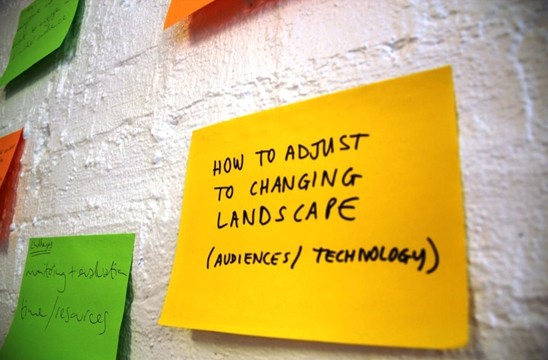Sarah Boiling, the leader of our Data-Driven Marketing course, gives us some key points about audience data you should be collecting to grow attendance…
In the world of Mosaic consumer insights, Facebook’s 98 personal data points and Rentrak’s weekly box office rankings, it can seem like were swimming in data.
But how do you know which data is most useful to you? How can you get hold of it? And how can you use it practically to grow your audiences?
I’m the course leader for the ICO’s Data Driven Marketing course in Leeds, and I’ve seen a lot of companies go from having no data (or swimming in it with no idea how to use it!) to being able to gather smart insights on their audience that can drive serious growth. But you can’t do that if you don’t know which bits of data you should be collecting. Here are five pieces of data that any cinema that wants to expand its audience cant afford to be without.

1. Your audience profile
If you want to grow your audience you need to know what you’re growing it from. Starting with a good understanding of the people you are already reaching is the first step in building a plan to reach more of them. You might want to know their age or life stage, where they live, their socio-economic status and their ethnic background. It will also be useful to know what they do: how often do they attend? What else do they do in their leisure time? With this, you can set some realistic targets about the changes you want to make,start to think about where to find more people like them, and crucially, see who is missing from your mix.
2. Your catchment area
Establishing and understanding your local catchment area which is home to your potential audience is crucial. How far do people travel to our cinema? What kind of people live around here? Whats the ethnic and social mix? Are there any families? What about retired people? Commuters?
Put these two things together and you can establish who is missing from your audience, how representative your audience is of your local community, and where the hot spots are with potential for audience growth.

3. Your box office profile
Another piece of the data jigsaw is knowing how your programme performs. Programming is sometimes an inexact science, relying on gut instinct as much as box office data. But being smart about combining your intuition with insights from data can make a major difference in driving growth. What were your top ten films of last year? Which types of films are most popular and which do you struggle with? Which films are more profitable? Whats your attendance pattern across different days/ times? Knowing this doesn’t mean you’ll ditch things from your programme that are hard to do, but it does mean that you can see which needs most focus.
4. Your audience motivations
The next step on from knowing who your audience are, and what they do, is knowing why they do it. What are their motivations for attending your cinema? Do they love the indie atmosphere, or is it convenient for the bus home? Maybe its all about the programme, or is it your great coffee and easy parking that brings them back? Once you know this, it helps you think more clearly about how you should be positioning yourself. Is it all about the films? Or should you be talking more about the community atmosphere and great beers on tap? It’ll also give you a good idea of what you should be investing in. You might think that your projection could do with an overhaul, but maybe your data shows that more comfortable seats would be a better investment. You simply don’t know unless you’ve asked!

5. The effectiveness of your marketing
“Half the money I spend on advertising is wasted, the trouble is I don’t know which half” – John Wanamaker, 1838-1922
You probably don’t have a big (nor indeed any) marketing team, and neither do you have unlimited budgets, so knowing which of your marketing and communication channels is working most effectively is vital. With many cinemas now taking a digital first approach to thei rmarketing, its never been easier to measure the return on your marketing investment, whether its open rate and click-throughs, daily page engaged users or re-tweets. But you need to take a holistic view of this data. Which platforms do you spend most time on? Which are driving real conversion i.e. bums on seats? Maybe you could cut your social media marketing time and budget in half and get out leafleting on the streets? Data can give you clear answers on what’s working and what you’re wasting time on.
Discover how to establish and use these (and many other)vital pieces of data at Data-driven Marketing. Combining practical exercises with inspirational case studies and examples from across the film and wider cultural sector, the course will equip you with the skills and confidence to recognise what data you need to achieve your objectives, to know where to find it, and understand how to use it.


